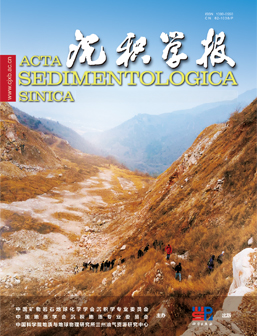Sedimentary Geochemical Characteristics of Xinying Bay in Hainan Since the Pleistocene: Provenance and Paleoenvironmental Significance
doi: 10.14027/j.issn.1000-0550.2025.007
- Received Date: 2024-10-19
- Available Online: 2025-04-15
-
Key words:
- Xinying Bay /
- Pleistocene /
- Provenance /
- Paleoenvironment /
- Sedimentary geochemistry
Abstract: [Objective] Xinying Bay, Hainan Province, retains a relatively complete sedimentary record of marine stratigraphy since the Pleistocene. Due to its closure and stability, it serves as a good window to reflect the paleoenvironmental changes since the Pleistocene in the Northern South China Sea. [Methods] Based on the analysis of whole rock major elements and Sr-Nd isotopes, the source of sediment material and the evolution of paleoclimate and paleoclimate in this area since Pleistocene were reconstructed, and the driving mechanism was discussed. [Results and Discussions] The borehole has three relatively obvious sections from bottom to top. The bottom U1 section has a relatively low εNd(0) value and a relatively high 86Sr/87Sr value. The middle U2 section has relatively high ratios of Al/Ti, K/Ti, Fe/Ti, and Mg/Ti. The results of provenance analysis show that the sediments of the borehole come from the intermediate source area, and the U1 section contains more older sedimentary materials, and the Sr-Nd isotope ratio is similar to that of the Red river sediments, while the U2 and U3 sections are similar to the Cretaceous-Permian feldspar granite in Hainan Island. The paleoenvironmental analysis shows that this region has experienced changes from dry cold to warm wet, and then to dry cold since the Pleistocene. [Conclusions] The sedimentary period of section U1 corresponds to the coldest MIS16 period in the Northern Hemisphere, which combined with previous chronological studies, and the dry and cold climate and relatively low sea level enable the clastic sediments of the Indochina continent to be transported to Xinying Bay. Then the East Asian summer monsoon strengthened, and the climate changed from cold and dry to warm and humid. As a result, the source area of U2 section was dominated by granitic rocks in Hainan Island because the sea level raised. The U3 section has undergone regional tectonic uplift, and the sedimentary source area is dominated by granite in the island.
| Citation: | Sedimentary Geochemical Characteristics of Xinying Bay in Hainan Since the Pleistocene: Provenance and Paleoenvironmental Significance[J]. Acta Sedimentologica Sinica. doi: 10.14027/j.issn.1000-0550.2025.007 |






 DownLoad:
DownLoad: